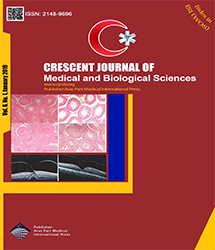
| Original Article | |
| Prevalence of Human Papillomavirus in Patients With Oral Squamous Cell Carcinoma in Tabriz, Iran | |
| Leila Rahbarnia1, Safar Farajnia2, Gholamreza Bayazian3, Masoud Naderpour4, Hadi Feizi5 | |
| 11Infectious and Tropical Diseases Research Center, Tabriz University of Medical Sciences, Tabriz, Iran 22Drug Applied Research Center, Tabriz University of Medical Sciences, Tabriz, Iran 33Biotechnology Research Center, Tabriz University of Medical Sciences, Tabriz, Iran 44Department of Otolaryngology, School of Medicine, Tabriz University of Medical Sciences, Tabriz, Iran 55Young Research and Elite Club, Zanjan Branch, Islamic Azad University, Zanjan, Iran |
|
|
CJMB 2019; 6: 105-108 Viewed : 60320 times Downloaded : 6071 times. Keywords : Human papillomavirus, Nested PCR, Oral squamous cell carcinoma, Iran |
|
| Full Text(PDF) | Related Articles | |
| Abstract | |
Objectives: Oral squamous cell carcinoma (OSCC) is one of the commonest malignant neoplasms in the oral cavity. Although human papillomavirus has been considered as one of the risk factors for oral cancer, the extent of its involvement in squamous cell carcinoma (SCC) has remained unclear. The present study aimed to detect the prevalence of HPV in the patients with OSCC in Tabriz, northwest of Iran. Materials and Methods: Genomic DNAs of 30 normal non-smoking cases and 30 cases with tongue SCC who underwent surgery in Tabriz, Iran, were extracted and used for amplification of HPV L1 fragment using MY09/MY11 and GP5/GP6 primers by polymerase chain reaction (PCR) and nested PCR. The positive PCR products were sequenced to confirm the presence of HPV. Results: Among 30 OSCC samples analyzed, two cases (6.6% of 30) were positive for HPV in PCR performed by MY09/MY11 primer, and none of them showed a positive result with GP5/GP6 primers. Nested PCR by MY/GP primers showed higher sensitivity in three positive cases (10% of 30) of SCC subjects. Conclusions: According to these findings, HPV infection may not be a causative agent in tissue samples obtained from OSCC patients in Tabriz. |
Cite By, Google Scholar
Google Scholar
PubMed
Online Submission System
 CJMB ENDNOTE ® Style
CJMB ENDNOTE ® Style
 Tutorials
Tutorials
 Publication Charge
Medical and Biological Research Center
About Journal
Publication Charge
Medical and Biological Research Center
About Journal
Aras Part Medical International Press Editor-in-Chief
Arash Khaki
Deputy Editor
Zafer Akan


















